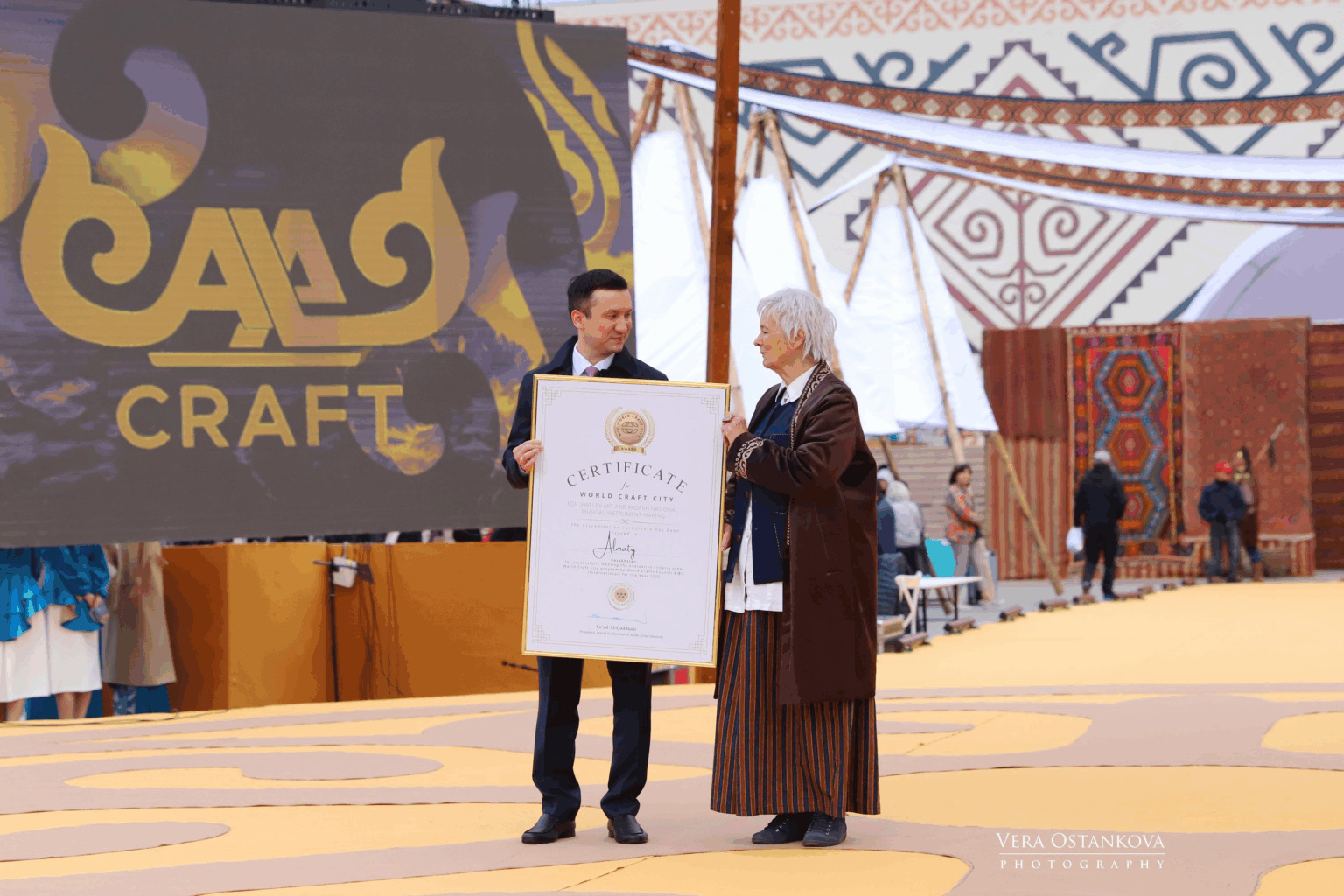Almaty Earns World Craft City Status, Strengthening Its Role as Central Asia’s Cultural Hub

Almaty has officially been designated as a World Craft City by the World Crafts Council, marking a crucial step in the city’s mission to preserve cultural heritage, nurture artisanal traditions, and strengthen its creative economy.
The World Crafts Council (WCC) is a non-governmental organization (NGO) affiliated with UNESCO, founded in 1964 to promote and protect traditional crafts and artisans around the world. Its mission is to encourage the preservation, development, and appreciation of craftsmanship as an essential part of cultural heritage and sustainable development.
The announcement took place during the ALA CRAFT 2025 international festival, held on October 4–5 at Abai Square in front of the Palace of the Republic.
The event gathered more than 100 artisans from Kazakhstan, Asia, Europe, Australia, New Zealand, and the United States, making it the largest crafts festival in Central Asia.
Supported by the World Crafts Council, the Kazakh Union of Artisans, and the Smithsonian Center for Folklife and Cultural Heritage (U.S.), the festival served as a vibrant showcase of craftsmanship and creativity.
“This festival shows that Almaty is a modern metropolis that carefully preserves traditions while supporting creative practices,” said Akmaral Yeshchanova, Deputy Head of Almaty’s Tourism Department.
The newly acquired title underscores Almaty’s growing international reputation. Galiya Tokseitova, Head of Almaty’s Tourism Department, noted that the recognition would “open new horizons for Almaty. It allows us to promote traditional crafts internationally, develop educational programs and residencies for artisans, and strengthen the city’s creative economy.”
She added that the status would further enhance Almaty’s image as a hub for creative industries and cultural tourism.
Jude van der Merwe, President of the World Crafts Council for the Asia-Pacific Region, who officially awarded the title, stated that the decision reflects “the city’s active role in nurturing artisans and passing knowledge to future generations.”
The festival also served as a platform for international artistic dialogue. New Zealand glass artist Layla Walter presented intricate glasswork inspired by Almaty pears, a piece rooted in her six-year creative journey since first visiting Kazakhstan.
“I saw Serik Rysbekov’s garden, drew his pears, and back in New Zealand spent six years creating this glass bowl,” Walter said, emphasizing shared creative traditions between Kazakhstan and New Zealand through wool and felting practices.
Similarly, Australian jeweler Vicki Mason showcased pieces inspired by indigenous flora such as eucalyptus and baronia. “My jewelry reflects the need to adapt gardens to drier climates and celebrates the beauty of native plants that survive despite harsh conditions,” Mason explained. Her work underlined how art can express resilience and environmental awareness while bridging cultures.
Local artisans also shone at the festival. Kazakh jeweler Ikramzhan Rafikov, winner of the 2022 Global Eco Artisan Awards, showcased his “Ring of Power”,a symbolic design merging femininity, strength, and national identity.
“This design symbolizes Kazakh women who were not only rulers but also warriors. Strength and elegance are united in this work,” Rafikov said. He credited partnerships with the Smithsonian Center for Folklife and Cultural Heritage for helping bring Kazakh craftsmanship to global audiences.
Beyond artistry, the festival featured remarkable moments such as Kazakh strongman Sergey Tsyryulnikov setting a Global Book of Records achievement by bending nine horseshoes in a single minute.
The city administration also revealed plans to invest 12.2 billion tenge to build the Children’s Science Museum, the first of its kind in the CIS region, signaling continued commitment to educational and cultural development.
According to a source, Almaty welcomed 1.14 million tourists in the first half of 2025, including over 323,000 foreign visitors, reflecting the growing international interest in the city’s creative and cultural initiatives.




